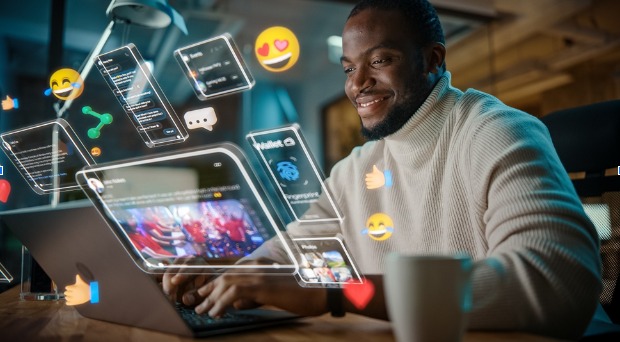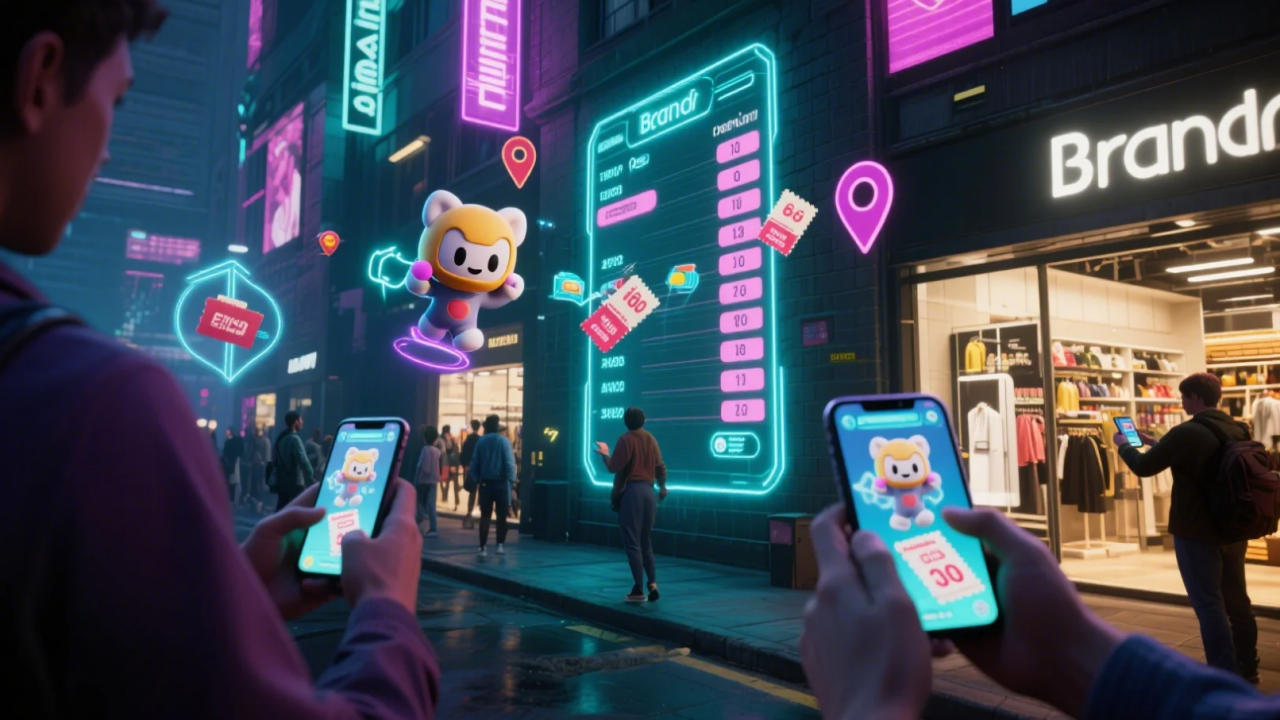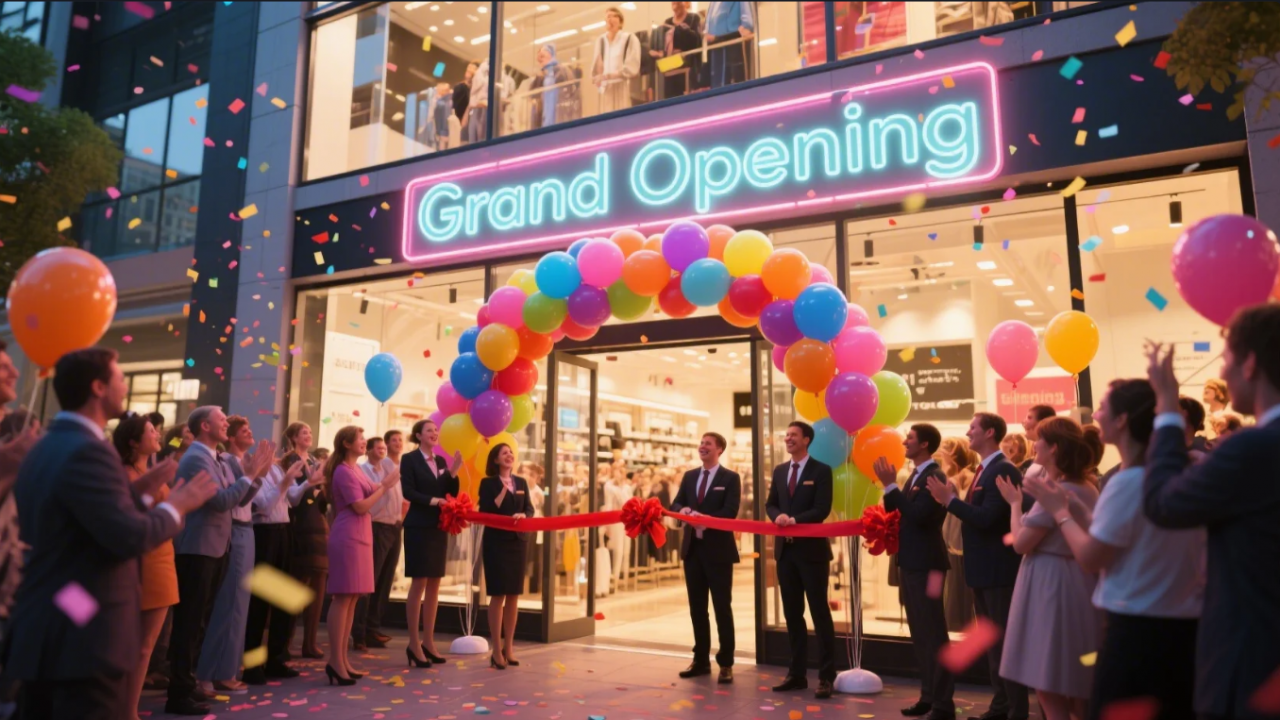How is AR related to social media?
Every three out of four social media users experience ad fatigue and consider social media ads as less reliable than TV ads. Therefore, creatives and marketers need to integrate some latest marketing techniques in their social media campaigns to make them more engaging. AR provides a fresh solution to help them create interactive experiences that turn passive viewers into active customers.
Many social media platforms are using augmented reality techniques like AR filters and virtual try-ons to attract and impress Gen-Z. This helps them provide their users with immersive experiences that were not possible with traditional marketing approaches. A study from Snap Inc. and Ipsos indicates that 80% of brands using AR report increased sales, improved performance metrics, and new customer acquisition.
History and evolution of AR in social media
The use of AR filters and lenses in social media started when Snapchat introduced AR lenses in 2015. These lenses use facial recognition technology to apply real-time effects on user’s face. It was a quick hit among social media users and also encouraged them to share their exciting AR images and videos with others.
After Snapchat’s huge success, other social media platforms such as Facebook and Instagram also introduced their AR filters in 2017. TikTok also joined the popular trend shortly after by introducing exciting AR filters and effects to create engaging content. Since then, these platforms are continuously evolving and adapting latest technological advancements.
Integration of AR in social media platforms helps brands and creators generate personalized AR experiences and content that boosts customer engagement through interactive marketing approaches. According to Statista, the number of people using AR in social media monthly increased from 29.9 million in 2018 to 48.3 million by 2022 in the United States.
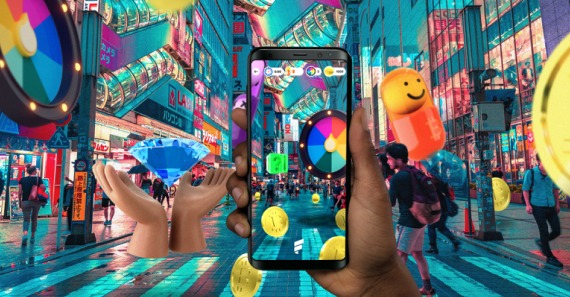
Rising trend of AR integration by social media influencers
Social media influencers are playing a major role in increasing the adoption of AR trends. Due to their vast reach and ability to engage users, brands collaborate with them to increase their exposure through engaging content. This leads to high user-generated content (UGC) as users follow influencers to recreate and share their AR experience.
This collaboration benefits brands by increasing their market visibility and helping influencers enhance their creative toolkit. This trend is not only limited to beauty and fashion-related AR experiences; it is also impacting other sectors such as travel, fitness, and entertainment through innovative and immersive AR experiences and content.
Applications of AR in social media
AR-powered filters and effects
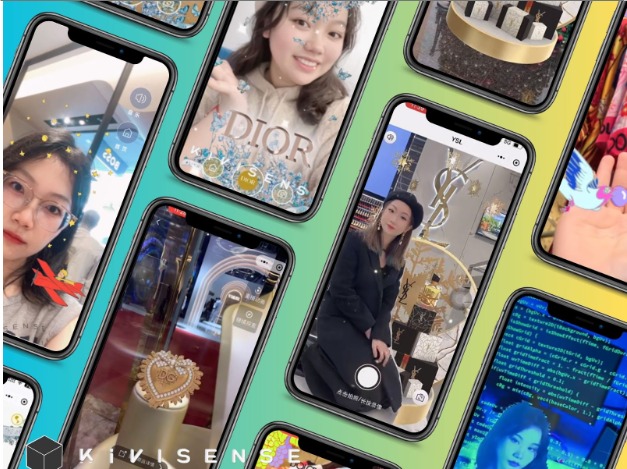
Use of AR-powered filters and effects is one of the most widely adopted applications of AR integration in social media. Many popular social media platforms of today’s era like Snapchat and Instagram are adding AR features into their apps so their users can add fun elements to their photos and videos.
Interactive AR filters use facial recognition technology to track users’ facial features and then apply exciting interactive effects on them in real time. Users can apply a variety of creative effects, from playful animations to virtual makeup, to express themselves in unique ways.
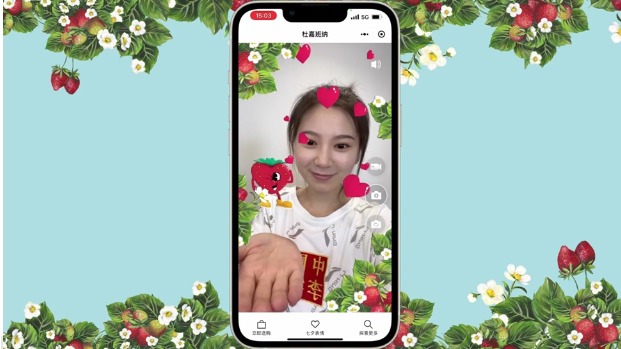
For example, Kivisense helped Dolce&Gabbana launch an immersive AR filter to celebrate Chinese Valentine’s Day. The interactive filter featured strawberry motifs and floral designs superimposed on images. Users could also try on different strawberry-themed clothes and accessories in a virtual festive atmosphere. This enabled them to express their emotions in a unique and innovative way.
Shopping and E-commerce
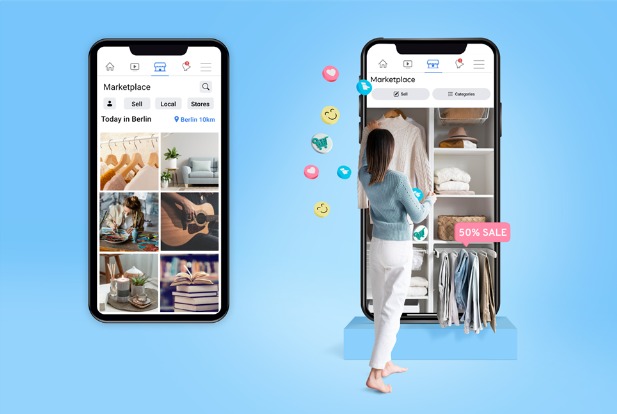
E-commerce market has greatly benefited by integrating AR into social media marketing campaigns. Brands are partnering with platforms like Instagram and Facebook to promote their products through interactive experiences like virtual try-ons and AR filters.
For example, make-up brands use AR to let users try various make-up looks virtually, while furniture retailers offer AR tools to visualize how a piece of furniture appears and fits in a space. These experiences enhance customer experiences and help retailers by boosting product sales and reducing return rates.
Kivisense offers virtual try-on experiences for many famous fashion and e-commerce brands including Gucci, Maybelline, Dior, Tiffany, and Burberry. You can contact us to create highly engaging AR-powered experiences for your social media marketing campaigns and achieve your e-commerce goals quickly.
Live streaming and events
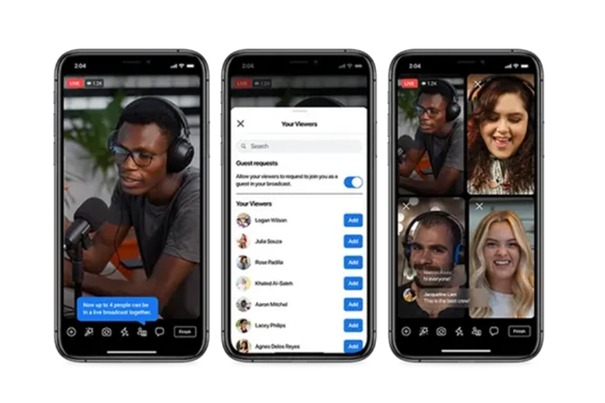
Source: tagtalk
AR integration in live streaming events is getting very popular on social media platforms. Platforms like Instagram Live and Facebook Live are incorporating AR elements to create interactive experiences. For example, during a live concert, artists can use AR to enhance their performances with visual effects that engage viewers in real time. Brands can also promote and launch their products through live events on social media and improve their conversion rates effectively.
Interactive AR games
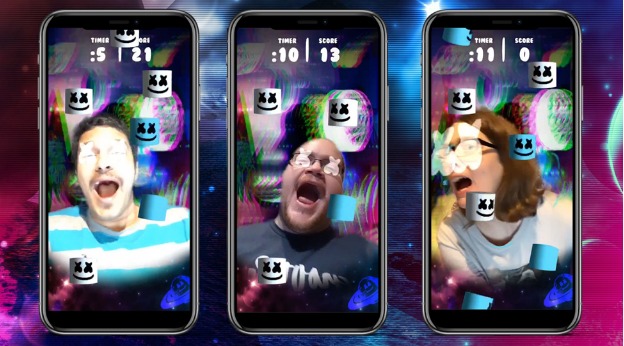
Source: groovejones
Many social media platforms like YouTube and Instagram are hosting highly interactive and engaging AR games. These games take players to virtual environments where they can interact with game elements in real time. Players can also challenge and compete with other players in an immersive virtual space. This blend of augmented reality and social interaction not only makes gaming more engaging but also encourages users to connect and share their experiences within the platform.
AR social media ads
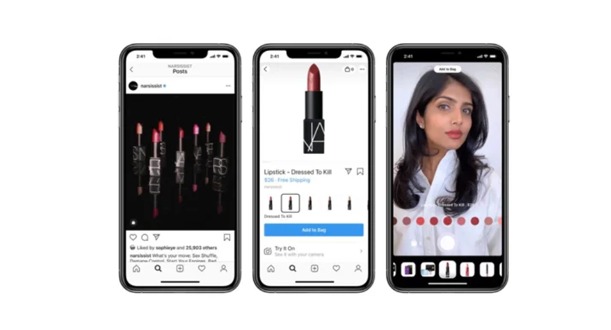
Source: impactplus
E-commerce marketers create more interactive and engaging promotional content by integrating AR and 3D modeling into their social media ad campaigns. This innovative approach helps them grab viewer’s attention through a unique and memorable advertising experience. Users are more likely to remember ads that include immersive elements, which enhances brand familiarity and strengthens customer connections with brand.
Benefits of AR integration in social media
Interactive marketing campaigns
Using cutting-edge AR features, brands can create highly interactive marketing campaigns to attract more customers. AR can transform static and boring ads into highly dynamic and super-engaging marketing campaigns where users can interact with brand and its products in a fun and immersive way.
According to the latest studies, 61% of consumers prefer retailers that provide AR experiences. This shows why more and more brands are investing in AR integration to enhance their marketing. In digital marketing, 67% of media planners and buyers want to incorporate more AR and VR into their advertising. This helps brands improve their conversion rates through higher engagement and reach.
One such example of AR advertising is Moschino heart biker bag campaign powered by Kivisense. The interactive game featured an AR filter to celebrate Chinese Valentine’s Day. Using these AR-powered filters, users could blow kisses, win points, and get many other valuable rewards in a gamified virtual environment.
Potential of content going viral
AR allows creators and brands to create novel content that has a high potential to go viral. New and innovative AR experiences encourage users to share them with others, which increases their reach and visibility. Moreover, viral content helps brands market their products and increase engagement without any significant advertising expenses. This gives brands and creators a competitive edge over their rivals and captivates the audience through engaging experiences.
Creative content creation
Using latest AR tools and techniques, social media creators and brands can experiment with different AR effects and styles to create customized AR experiences that align with their specific marketing objectives. AR tools provide them with endless opportunities for creative expression. This enhances a sense of novelty and personalization in content, allowing customers to connect with it more deeply.
Enhanced user experience and engagement
The integration of AR in social media enhances user experiences by letting them engage with content or products through hyper-realistic interaction. This captivates customer’s attention by creating a wow effect in their minds. When users enjoy AR experiences, they tend to spend more time on the platform, which leads to more engagement and better conversion rates.
Use cases of successful AR integration in social media
Snapchat
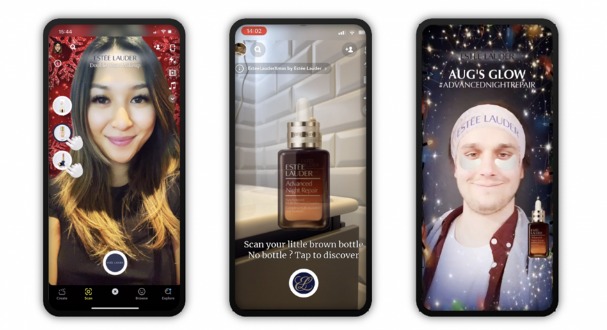
Source: theindustry.beauty
Snapchat is a pioneer in AR integration on social media. Its signature filters and lenses have become a cultural phenomenon. Many brands have collaborated with Snapchat to promote their products through interactive AR filters.
For example, Estee Lauder has collaborated with Snapchat to promote its latest collection of fragrances through AR filters. Through this filter, the brand displayed the fragrances before customers with all the emotions and inspirations behind them in an immersive manner.
Tiktok
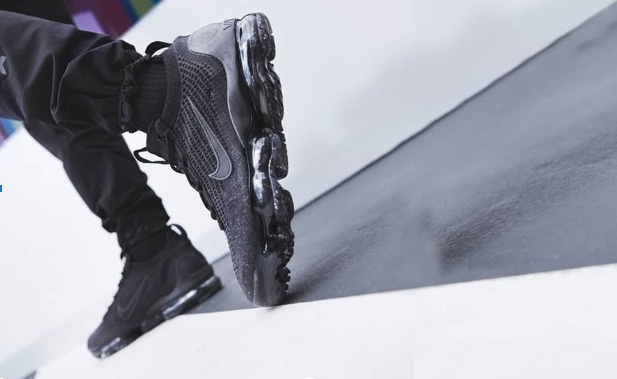
Source: fashionunited
TikTok offers countless exciting AR effects and filters that users can apply to their short videos to make them more engaging and fun. Many e-commerce fashion brands are using the platform to promote their products through immersive AR experiences.
For example, JD Sports collaborated with Nike and TikTok to launch the first augmented reality shoe try-on in the UK for the new Nike Air VaporMax. This innovative campaign introduced a 3D AR filter that lets users virtually try on three colorways of the shoe. Users could move their feet to the beat of a custom track and participate in a competition by using the hashtag #JDVaporMaxShuffle, with a chance to win a year’s supply of Nike footwear.
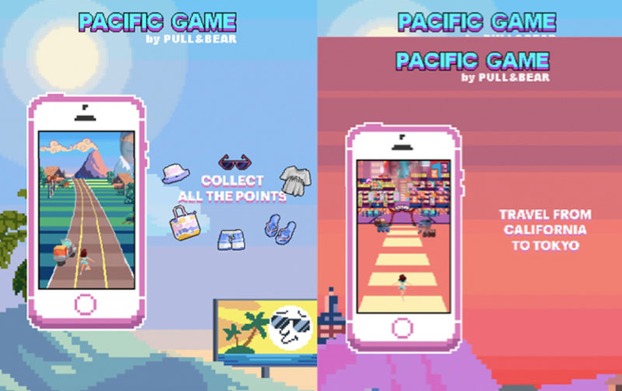
Source: controlpublicidad
Facebook has integrated AR features to enhance user engagement through highly immersive and realistic experiences. For example, Inditex, the owner of Pull & Bear, launched an AR game called ‘’Pacific Game’’ in collaboration with Facebook’s ‘’Creative Shop’’.
This game takes players on a virtual journey from California to Tokyo and is designed for social media, making it playable through Instagram, Facebook, and the retailer’s website. This collaboration helped the brand to market its game to a wider audience and increase its visibility in the highly crowded AR gaming market.
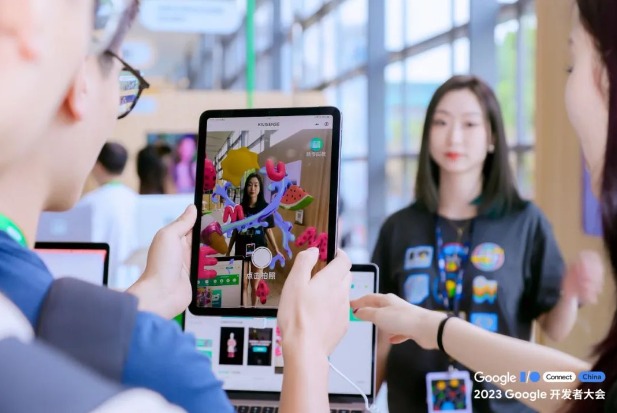
Kivicube WeChat Mini Program Showcase, Kivisense at Google IO Connect 2023
AR WeChat Mini program facilitates interactive AR experiences for users within the WeChat ecosystem in China. Such immersive experiences serve to enhance user engagement and drive e-commerce within the app.
For example, Tiffany has launched an AR mini program on WeChat that allows users to virtually try on rings using their smartphone cameras. This engaging and highly realistic experience helps users virtually see how the necklace will look in their hands before buying it.
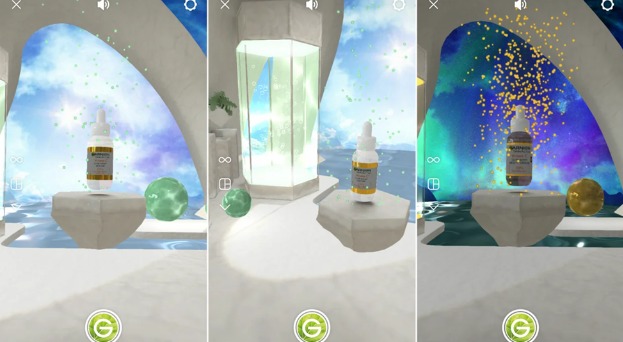
Source: adcampaigns
Instagram’s AR filters and shopping features have turned the platform into a powerful marketing tool. It helps brands collaborate with famous influencers and market their products in an interactive manner.
For example, L’Oréal Garnier introduced an Instagram AR filter in May 2023 to advertise its Vitamin C Glow Boost Night Serum. In this experience, users could enter a futuristic spa called ‘’Vitaverse’’ where they could interact with the silhouette of the serum. The innovative strategy helped brand enhance its engagement and sales significantly.
Future of AR in social media: what lies ahead?
The future of social media is closely tied to transformative power of Augmented reality. We can expect to see more realistic and sophisticated filters that enhance user interactions. Moreover, integration of VR in physical retail will allow consumers to engage with products in a more interactive way. Social shopping will evolve to facilitate instant purchases directly within AR environments.
AR integration with advanced AI algorithms will enhance relevance and engagement through more personalized experiences. AR-enhanced interactive live events will offer real-time participation in events from anywhere. These are just a few examples, AR has the potential to revolutionize social media content marketing in unimaginable ways.
Conclusion
AR’s ability to merge the digital and physical worlds goes beyond just enhancement, it redefines how engagement occurs. AR helps to create immersive, engaging, and shareable experiences to make your mark in a highly crowded digital landscape. You can also incorporate AR into your social media platforms to enhance your e-commerce business. Contact us at Kivisense to boost your engagement and omnichannel sales in Metaverse through interactive and immersive experiences.

